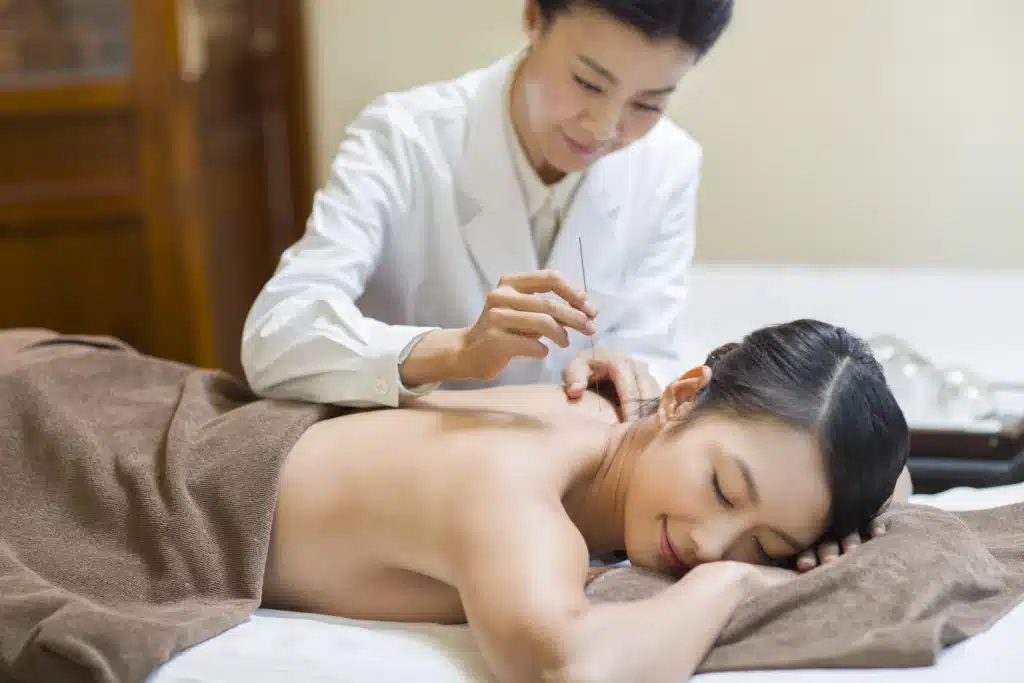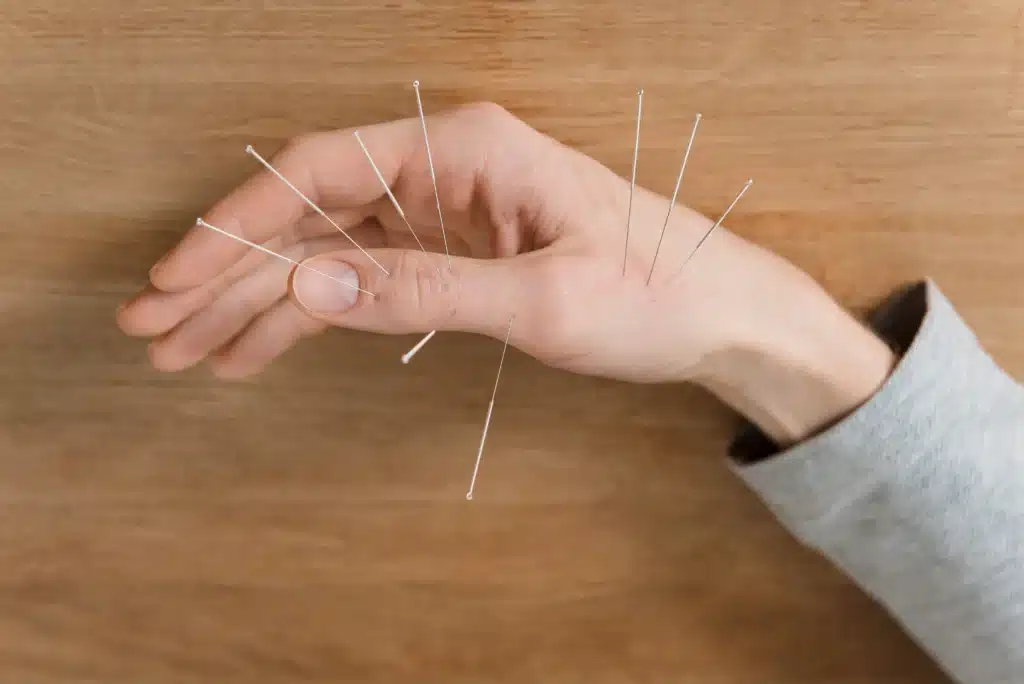
Table of Contents
ToggleIn the realm of medicine, one practice has withstood the test of time and proven its worth repeatedly: acupuncture.
As ancient as it is innovative, this treatment stands as a beacon of holistic, effective care in the modern healthcare landscape.
This article will delve into the science, benefits, and applications of this timeless practice.
Tracing its roots back to the foundations of traditional Chinese medicine over 2000 years ago, acupuncture has a long and rich history.
This ancient practice is centered around the concept of ‘Qi’ (pronounced ‘chee’), the vital energy force flowing through ‘meridians’ or pathways in the human body.
The basic premise of acupuncture is that illness arises when the flow of Qi gets blocked. Involving the insertion of thin needles at various points on these meridians, aims to restore the balance and smooth flow of Qi.
On a physiological level, this stimulates the nervous system, triggering biochemical responses that promote healing and well-being.
The necessity of pain management is undisputed. In the realm of geriatric health, its importance multiplies manifold.
Effective pain management can not only decrease physical symptoms but also significantly enhance emotional and social well-being for our older adults.
Pain management in geriatric and palliative care emphasizes helping individuals maintain their functionality and independence as much as possible.
Thus, pain management for the elderly is not just about reducing pain—it’s about improving life quality, increasing social interactions, and fostering a sense of purpose.
The concept of Qi and Meridians
In traditional Chinese medicine, Qi is the life force or energy that gives us vitality. It flows through pathways called meridians, each associated with a different organ system.
When acupuncture needles are inserted, they stimulate nerve endings. This prompts the release of endorphins, the body’s natural painkillers, and other neurotransmitters, facilitating pain relief and promoting a sense of well-being.
The comprehensive treatment strategy of this treatment offers a multitude of advantages that surpass mere symptomatic respite. These merits can be expansively divided into universal and distinct benefits.
Universal benefits of acupuncture envelop alleviating stress, augmenting sleep quality, boosting immunity, and fostering an uplift in overall wellness. In a more pinpointed scenario, acupuncture has proven to be effective in addressing an array of health problems.
Acupuncture is well-regarded for its proficiency in handling diverse types of pain, encompassing chronic back discomfort, arthritis, migraines, and menstrual pain. Studies indicate that it could enhance recuperation in sports-related injuries.
Acupuncture can wield a substantial influence on mental health. It has been employed to address stress, anxiety, and depression, often yielding relief where traditional treatments have fallen short.
Through the reinstatement of body balance, acupuncture fosters improved sleep quality. This positions it as a potential treatment alternative for insomnia and other sleep disturbances.
Ranging from digestive complications to respiratory conditions, it presents resolutions for an assortment of health concerns. Its adaptability remains one of its most potent attributes.

In orthopedic medicine, this treatment has found a distinct place for itself. It’s used for pain relief, improved mobility, and expedited recovery.
Sports injuries
Acupuncture accelerates the healing process in sports injuries by reducing inflammation, improving blood flow, and relieving pain.
Arthritis
For those living with arthritis, this treatment can offer a respite by reducing inflammation and pain, and improving joint function.
Post-surgery recovery
Acupuncture assists in post-surgery recovery by enhancing the body’s healing abilities and managing post-operative pain.
Acupuncture complements other treatments effectively. The harmonious integration with Western medicine can yield incredible results.
Acupuncture and western medicine
The union of Eastern and Western medical principles can open up new avenues for patient recovery. Acupuncture, for instance, can reduce the side effects of chemotherapy, or improve the success rate of IVF treatments.

Engaging in acupuncture treatment follows a simple and transparent procedure. It begins with an initial consultation, followed by the treatment itself, and it wraps up with potential post-treatment effects and how to manage them.
Before the acupuncture session, the practitioner conducts an in-depth interview to understand the patient’s health condition and objectives. The patient is advised to wear comfortable clothing and avoid heavy meals before the session.
A typical session lasts about 30 to 60 minutes. The practitioner inserts fine needles at specific points on the body. The needles are left in place for 15 to 30 minutes while the patient relaxes.
Post-treatment, some patients may experience mild side effects like fatigue, soreness, or lightheadedness. Drinking plenty of water, rest, and light physical activity can help manage these minor effects.
Acupuncture as a profession is gaining substantial recognition in healthcare. It requires rigorous training and certification and plays a significant role in a multidisciplinary healthcare team.
Becoming an acupuncturist requires a commitment to learning and practice. It entails an extensive study of human anatomy, traditional Chinese medicine, and the practical application of acupuncture. Most states require licensure to practice acupuncture, which necessitates passing a comprehensive exam.
In a multidisciplinary healthcare team, an acupuncturist can offer a holistic perspective, working in harmony with other healthcare professionals to provide comprehensive patient care.
Acupuncture, a venerable art with an innovative edge, opens up a world of advantages and opportunities in healthcare.
With its proven effectiveness in addressing an extensive range of health issues, its synergistic relationship with mainstream medicine, and its pivotal contribution to contemporary healthcare, acupuncture truly encapsulates the fusion of age-old wisdom and modern science.
It is not merely a treatment to consider, but rather, an enlightening journey of wellness and healing that every individual can embark upon.
GET IN TOUCH +
285 Sills Road
Building 5-6, Suite E
East Patchogue, NY 11772
(631) 475-5511
184 N. Belle Mead Road
East Setauket, NY 11733
(631) 675-6226
GET IN TOUCH +
285 Sills Road
Building 5-6, Suite E
East Patchogue, NY 11772
(631) 475-5511
184 N. Belle Mead Road
East Setauket, NY 11733
(631) 675-6226
SUBSCRIBE TO OUR NEWSLETTER +
Send us a Google review. Click this link and let us know how we did!
Review us on Yelp too.